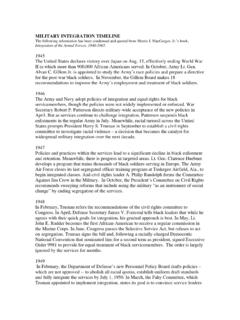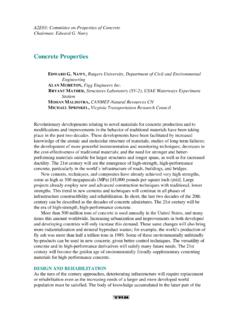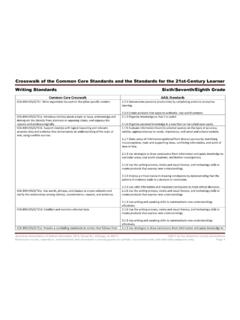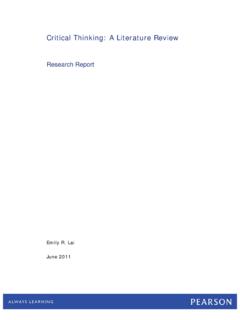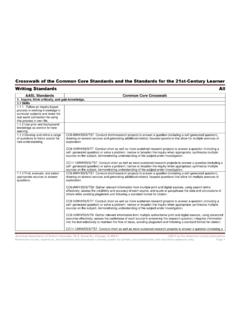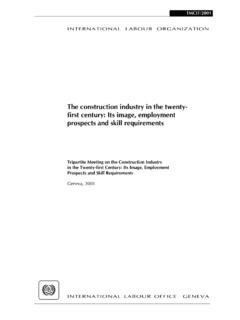Transcription of Strategic Guidance as of 1530 4 January 2
1 Sustaining Global Leadership: Priorities for 21st century Defense 1 Introduction The United States has played a leading role in transforming the international system over the past sixty-five years. Working with like-minded nations, the United States has created a safer, more stable, and more prosperous world for the American people, our allies, and our partners around the globe than existed prior to World War II. Over the last decade, we have undertaken extended operations in Iraq and Afghanistan to bring stability to those countries and secure our interests. As we responsibly draw down from these two operations, take steps to protect our nation s economic vitality, and protect our interests in a world of accelerating change, we face an inflection point.
2 This merited an assessment of the defense strategy in light of the changing geopolitical environment and our changing fiscal circumstances. This assessment reflects the President s Strategic direction to the Department and was deeply informed by the Department s civilian and military leadership, including the Joint Chiefs of Staff, the Secretaries of the Military Departments, and the Combatant Commanders. Out of the assessment we developed a defense strategy that transitions our Defense enterprise from an emphasis on today s wars to preparing for future challenges, protects the broad range of national security interests, advances the Department s efforts to rebalance and reform, and supports the national security imperative of deficit reduction through a lower level of defense spending.
3 This Strategic Guidance document describes the projected security environment and the key military missions for which the Department of Defense (DoD) will prepare. It is intended as a blueprint for the Joint Force in 2020, providing a set of precepts that will help guide decisions regarding the size and shape of the force over subsequent program and budget cycles, and highlighting some of the Strategic risks that may be associated with the proposed strategy. A Challenging Global Security Environment The global security environment presents an increasingly complex set of challenges and opportunities to which all elements of national power must be applied.
4 The demise of Osama bin Laden and the capturing or killing of many other senior al-Qa ida leaders have rendered the group far less capable. However, al-Qa ida and its affiliates remain active in Pakistan, Afghanistan, Yemen, Somalia, and elsewhere. More broadly, violent extremists will continue to threaten interests, allies, partners, and the homeland. The primary loci of these threats are South Asia and the Middle East. With the diffusion of destructive technology, these extremists have the potential to pose catastrophic threats that could directly affect our security and prosperity. For the foreseeable future, the United States will continue to take an active approach to countering these threats by monitoring the activities of non-state threats worldwide, working with allies and partners to establish control over ungoverned territories, and directly striking the most dangerous groups and individuals when necessary.
5 Sustaining Global Leadership: Priorities for 21st century Defense 2 economic and security interests are inextricably linked to developments in the arc extending from the Western Pacific and East Asia into the Indian Ocean region and South Asia, creating a mix of evolving challenges and opportunities. Accordingly, while the military will continue to contribute to security globally, we will of necessity rebalance toward the Asia-Pacific region. Our relationships with Asian allies and key partners are critical to the future stability and growth of the region. We will emphasize our existing alliances, which provide a vital foundation for Asia-Pacific security.
6 We will also expand our networks of cooperation with emerging partners throughout the Asia-Pacific to ensure collective capability and capacity for securing common interests. The United States is also investing in a long-term Strategic partnership with India to support its ability to serve as a regional economic anchor and provider of security in the broader Indian Ocean region. Furthermore, we will maintain peace on the Korean Peninsula by effectively working with allies and other regional states to deter and defend against provocation from North Korea, which is actively pursuing a nuclear weapons program. The maintenance of peace, stability, the free flow of commerce, and of influence in this dynamic region will depend in part on an underlying balance of military capability and presence.
7 Over the long term, China s emergence as a regional power will have the potential to affect the economy and our security in a variety of ways. Our two countries have a strong stake in peace and stability in East Asia and an interest in building a cooperative bilateral relationship. However, the growth of China s military power must be accompanied by greater clarity of its Strategic intentions in order to avoid causing friction in the region. The United States will continue to make the necessary investments to ensure that we maintain regional access and the ability to operate freely in keeping with our treaty obligations and with international law.
8 Working closely with our network of allies and partners, we will continue to promote a rules-based international order that ensures underlying stability and encourages the peaceful rise of new powers, economic dynamism, and constructive defense cooperation. In the Middle East, the Arab Awakening presents both Strategic opportunities and challenges. Regime changes, as well as tensions within and among states under pressure to reform, introduce uncertainty for the future. But they also may result in governments that, over the long term, are more responsive to the legitimate aspirations of their people, and are more stable and reliable partners of the United States.
9 Our defense efforts in the Middle East will be aimed at countering violent extremists and destabilizing threats, as well as upholding our commitment to allies and partner states. Of particular concern are the proliferation of ballistic missiles and weapons of mass destruction (WMD). policy will emphasize Gulf security, in collaboration with Gulf Cooperation Council countries when appropriate, to prevent Iran s development of a nuclear weapon capability and counter its destabilizing policies. The United States will do this while standing up for Israel s security and a comprehensive Middle East peace. To support these objectives, the United States will continue to place a premium on and allied military presence in and support of partner nations in and around this region.
10 Europe is home to some of America s most stalwart allies and partners, many of whom have sacrificed alongside forces in Afghanistan, Iraq, and elsewhere. Europe is our principal partner in seeking global and economic security, and will remain so for the foreseeable Sustaining Global Leadership: Priorities for 21st century Defense 3 future. At the same time, security challenges and unresolved conflicts persist in parts of Europe and Eurasia, where the United States must continue to promote regional security and Euro-Atlantic integration. The United States has enduring interests in supporting peace and prosperity in Europe as well as bolstering the strength and vitality of NATO, which is critical to the security of Europe and beyond.
